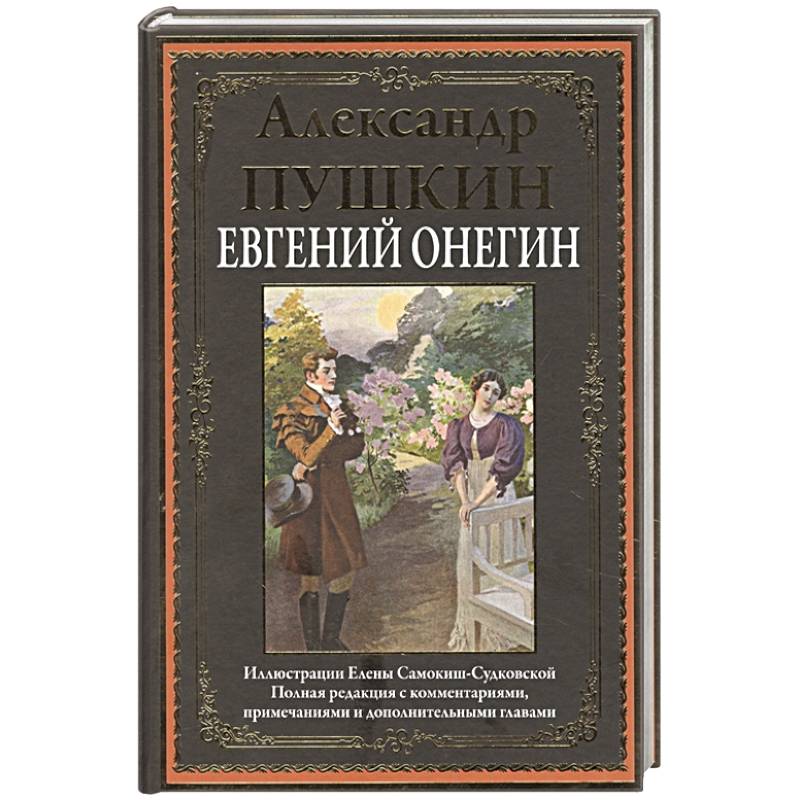Eugene Onegin
Please sign in so that we can notify you about a reply
Starting the first chapter of Eugene Onegin, Alexander Sergeyevich Pushkin (1799–1837) and did not suspect that he would create one of his best works. The romance in verses, which was begun without a plan, has begun without a plan, a real encyclopedia of the life of a whole social layer of Russia in the first quarter of the 19th century has turned. In “Onegin”, the breadth of those affected by the, attention to the details of everyday life, the intriguing plot, the depth of description of the characters affects. Features of the life of that era are shown in the novel with unsurpassed skill. A. S. Pushkin wrote “Eugene Onegin” for about seven and a half years (1823–1830) and put his whole soul into it. Such epoch -making work for Goethe was “Faust”, and for Byron - “Pilgrimage of Child Harold” and “Don Juan”. Starting to write “Onegin”, A. S. Pushkin did not count on the publication and worked, as he himself expressed, “through the sleeves”, then reflecting his own life in the next chapter, then making lyrical digressions full of subtle humor or deep elegiac feeling. As a result, a masterpiece was born, with whom every educated Russian is familiar today.
This publication, in addition to the classical text of the novel, includes numerous comments that help to better understand the realities of Russian life at the beginning of the XIXV., As well as an extensive article of the famous literary critic XIX in. Lev Ivanovich Polivanov about the history of the creation and artistic features of this unique work. At the end of the publication, the options for some stanzas and parts of the novel, which were preserved only in the manuscripts of the poet, as well as “excerpts from Onegin’s trip”, restored by A.F. Bychkov along the manuscript notebook of A. S. Pushkin.
The book is decorated with magnificent colored color Illustrations of Elena Petrovna Samokish-Sudkovskaya, nee Benard (1863–1924), which allow you to see both the heroes of the novel and the life surrounding their lives. Elena Petrovna was born in St. Petersburg in the family of military engineer Peter Petrovich Benard. She studied painting at a Helsingform drawing school and took private lessons from V.P. Vereshchagin. Her works were demonstrated along with the canvases of such masters of painting as I. I. Shishkin and I.E. Repin. The artist devoted a lot of time to book illustrations, posters and posters, was fond of modern, hence the love of ornamental borders, vignettes, screensavers and endings. In 1883, she married an academician of painting by R. G. Sudkovsky, but after 2 years he died of typhoid, in 1889 she married the artist N. S. Samokish, hence her double surname. The revolutionary events of 1917 forced E.P. Samokish-Sudkovskaya to move to a relatively calm Vyborg. Later, the artist emigrated to France, died in Paris in 1924
This publication, in addition to the classical text of the novel, includes numerous comments that help to better understand the realities of Russian life at the beginning of the XIXV., As well as an extensive article of the famous literary critic XIX in. Lev Ivanovich Polivanov about the history of the creation and artistic features of this unique work. At the end of the publication, the options for some stanzas and parts of the novel, which were preserved only in the manuscripts of the poet, as well as “excerpts from Onegin’s trip”, restored by A.F. Bychkov along the manuscript notebook of A. S. Pushkin.
The book is decorated with magnificent colored color Illustrations of Elena Petrovna Samokish-Sudkovskaya, nee Benard (1863–1924), which allow you to see both the heroes of the novel and the life surrounding their lives. Elena Petrovna was born in St. Petersburg in the family of military engineer Peter Petrovich Benard. She studied painting at a Helsingform drawing school and took private lessons from V.P. Vereshchagin. Her works were demonstrated along with the canvases of such masters of painting as I. I. Shishkin and I.E. Repin. The artist devoted a lot of time to book illustrations, posters and posters, was fond of modern, hence the love of ornamental borders, vignettes, screensavers and endings. In 1883, she married an academician of painting by R. G. Sudkovsky, but after 2 years he died of typhoid, in 1889 she married the artist N. S. Samokish, hence her double surname. The revolutionary events of 1917 forced E.P. Samokish-Sudkovskaya to move to a relatively calm Vyborg. Later, the artist emigrated to France, died in Paris in 1924
Author:
Author:Pushkin A. S.
Cover:
Cover:Hard
Category:
- Category:Children's Book
- Category:Fiction
- Category:Historical Literature
- Category:Modern Literature
- Category:Poetry & Literature
Publication language:
Publication Language:Russian
Paper:
Paper:offset
Series:
Series: Library of World Literature
Age restrictions:
Age restrictions:12+
ISBN:
ISBN:978-5-9603-0652-2
No reviews found
